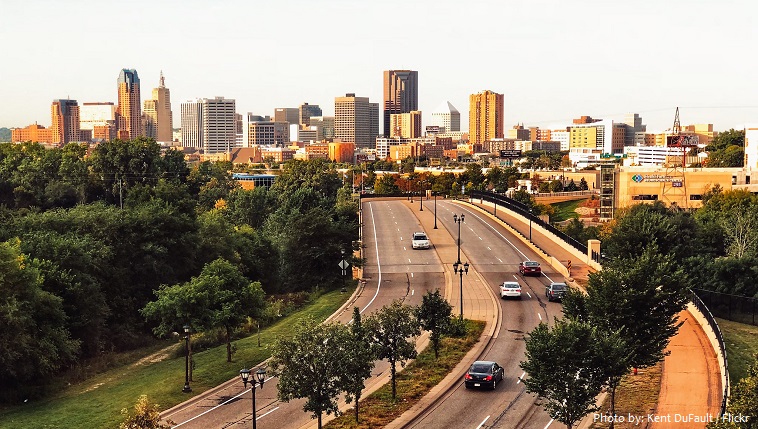
Saint Paul abbreviated St. Paul is the capital of the US state of Minnesota.
Situated in the southeastern part of the state, St. Paul is at the head of navigation on the Mississippi River near its confluence with the Minnesota River.
The city adjoins Minneapolis on the west, and together they form the Twin Cities metropolitan area, the largest conurbation in the state and in the 3rd largest in the Midwest.
As of January 2021, the population of Saint Paul is about 310,000 people.
The city covers a total area of 146 square kilometers (56 square miles).
The average altitude is about 214 metres (795 feet) above sea level.
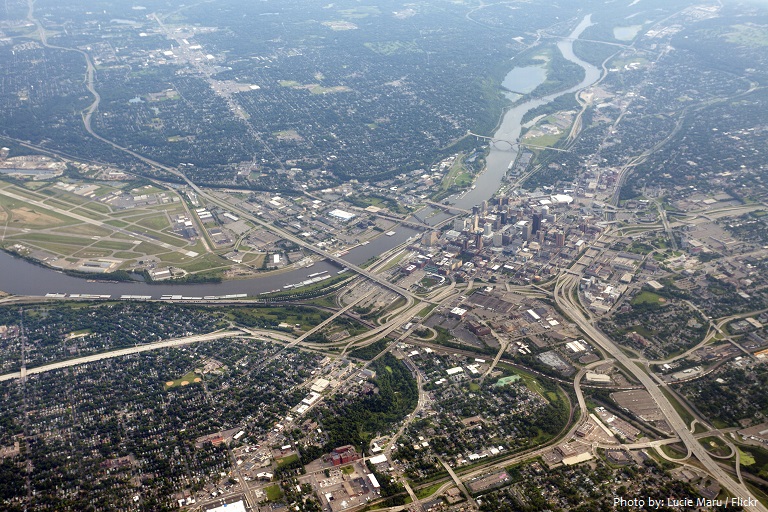
Sioux and Ojibwa peoples were early inhabitants of the area.
In 1680 the Franciscan missionary Louis Hennepin passed the site, and in 1766 explorer Jonathan Carver probed a nearby cavern (since known as Carver’s Cave).
In 1805 Lieutenant Zebulon Montgomery Pike, leader of an American expedition to explore the headwaters of the Mississippi River, made a treaty there (never officially ratified) with the Sioux for possession of the region, including the site on which the military outpost Fort Snelling (now a state park) was later built.
The first land claim was made in 1838 by tavern owner Pierre (“Pig’s Eye”) Parrant – he was closely followed by Abraham Perry. The settlement was known as Pig’s Eye Landing until 1841, when Roman Catholic missionary Lucien Galtier built a log chapel dedicated to the apostle Paul.
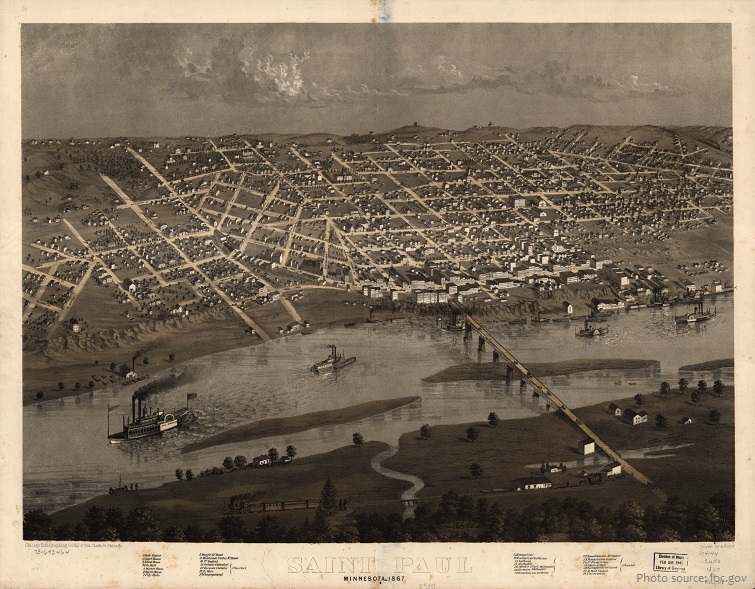
In 1849 St. Paul became the capital of the newly formed Minnesota Territory, and it was made the state capital when Minnesota was admitted to the Union in 1858.
Between 1849 and 1887 the boundaries were expanded 14 times to their present extent. As the region grew the city became the seat of an archdiocese that built St. Paul’s Cathedral, overlooking the downtown.
In 1886 the St. Paul Union Stockyards were established, and the livestock market (later moved to suburban South St. Paul) became one of the world’s largest. Meatpacking plants also flourished in the city, but during the 1970s the market dramatically declined in size, and most major packing plants
closed.
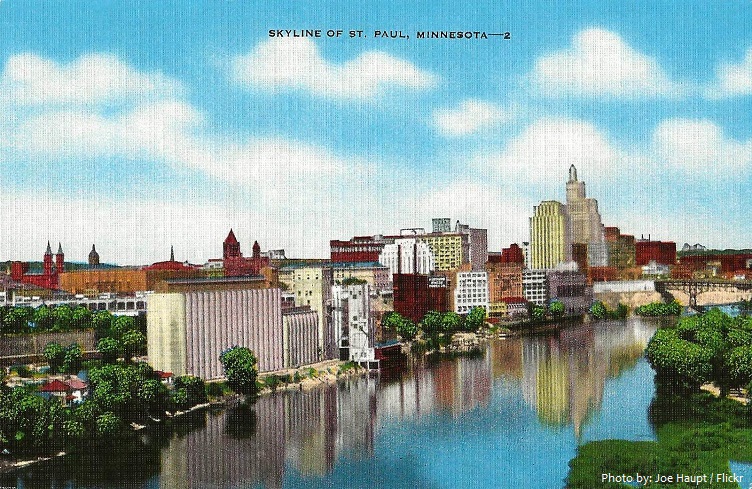
By the late 20th century, it became more influenced by commerce and its function as the state capital.
The Cathedral of Saint Paul is a Roman Catholic cathedral in the city of St. Paul. It is the Cathedral of the Archdiocese of Saint Paul and Minneapolis; the Co-Cathedral is the Basilica of St. Mary in Minneapolis. One of the most distinctive cathedrals in the United States, it sits on Cathedral Hill
overlooking downtown St. Paul and features a distinctive copper-clad dome. It is dedicated to Paul the Apostle, who is also the namesake of the City of St. Paul. The current building opened in 1915 as the fourth cathedral of the archdiocese to bear this name. On March 25, 2009, it was designated as the
National Shrine of the Apostle Paul by the United States Conference of Catholic Bishops and the Vatican.
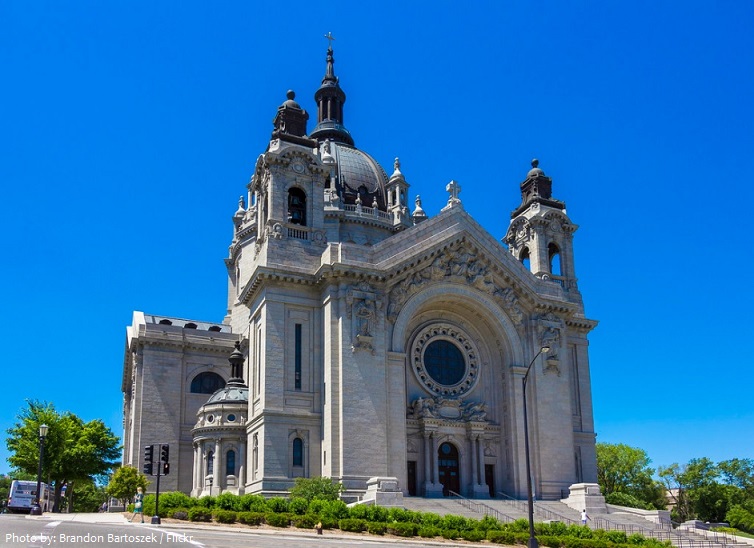
The Minnesota State Capitol is the seat of government for the US state of Minnesota, in its capital city of Saint Paul. It houses the Minnesota Senate, Minnesota House of Representatives, the office of the Attorney General and the office of the Governor. The building also includes a chamber for the
Minnesota Supreme Court, although court activities usually take place in the neighboring Minnesota Judicial Center.
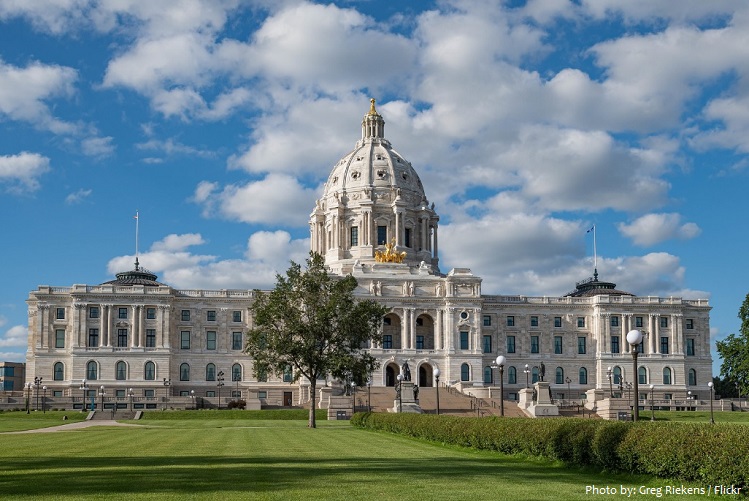
Science Museum of Minnesota is an American museum focused on topics in technology, natural history, physical science, and mathematics education. Founded in 1907 and located in Saint Paul, the nonprofit institution is staffed by over 600 employees and over 1,600 volunteers. The museum’s mission statement is to “Turn on the science: Inspire learning. Inform policy. Improve lives.”
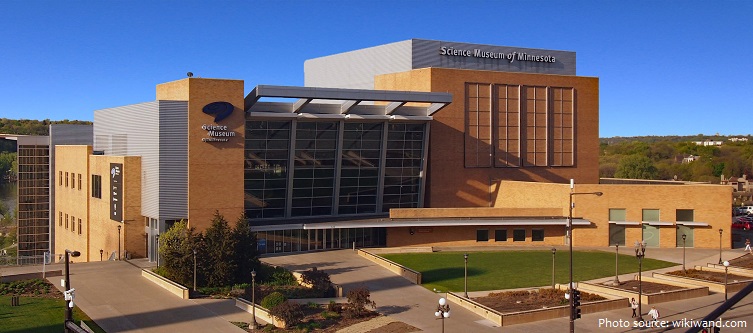
The Minnesota History Center is a museum and library that serves as the headquarters of the Minnesota Historical Society. It is near downtown Saint Paul and is considered one of Minnesota’s finest public buildings. The Center hosts concerts, dance performances, lectures, conferences, meetings, dinners, political campaign events, memorial services, receptions, parties, and weddings – as many as 75,000 schoolchildren visit the History Center every year.

The James J. Hill House was built by railroad magnate James J. Hill. The house, completed in 1891, is near the eastern end of Summit Avenue near the Cathedral of Saint Paul. The house, for its time, was very large and was the “showcase of St. Paul” until James J.Hill’s death in 1916. It is listed as a U.S. National Historic Landmark, operated by the Minnesota Historical Society. It is also a contributing property to the Historic Hill District.

St. Paul’s historic Landmark Center, completed in 1902, originally served as the United States Post Office, Courthouse, and Custom House for the state of Minnesota. It was designed by Willoughby J. Edbrooke, who served as Supervising Architect of the US Treasury Department in 1891–92. Edbrooke
designed a body of public architecture, much of which, like this structure, was completed after his 1896 death. Landmark Center stands at 75 West Fifth Street in Rice Park and is now an arts and culture center.
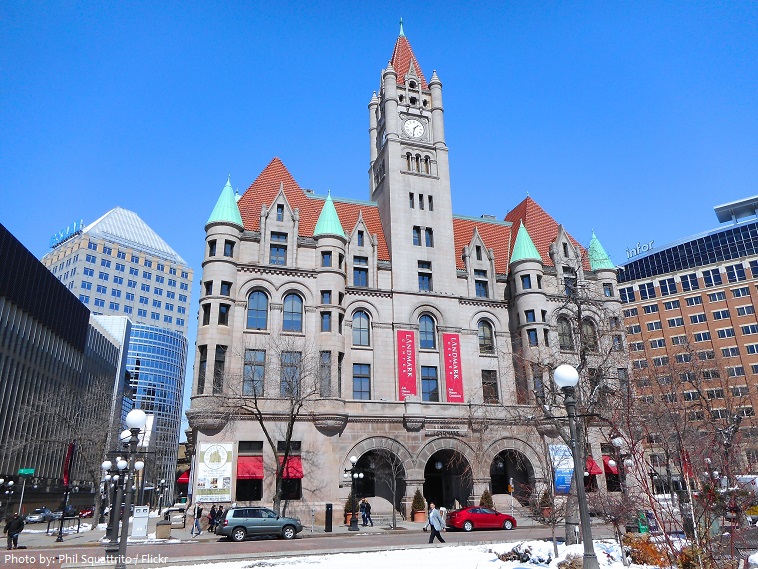
The Como Park Zoo and Conservatory are located in Como Park. The park, zoo and conservatory are owned by the City of Saint Paul and are a division of Saint Paul Parks and Recreation. Its attractions include the zoo, the conservatory, an amusement park, a carousel, Lake Como, a golf course, a pool and more. The park receives more than 1.9 million visitors annually. Como Park is a free park and while no admission fee is charged for the zoo or conservatory, voluntary donations of $3 per adult and $2 child are suggested.
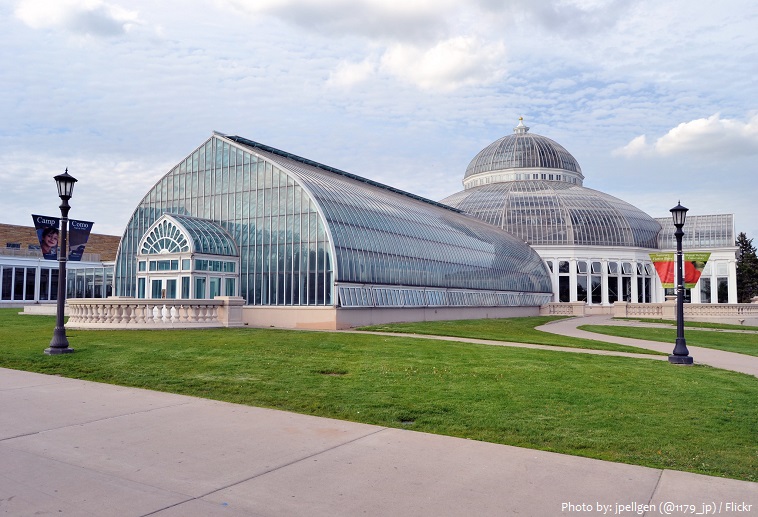
Every January, Saint Paul hosts the Saint Paul Winter Carnival, a tradition that began in 1886 when a New York reporter called Saint Paul “another Siberia”.
St. Paul has been called “The Last City of the East”.
Throughout the city’s history the great majority of its residents have been of European (largely German and Irish) ancestry, but that proportion has been decreasing as the number of African Americans, Asians, and Hispanics has grown – the latter three groups now constitute about one-third of the population.
The city is corporate headquarters of 3M (Minnesota Mining & Manufacturing Company).